|
Conditions: Housing and Health
|
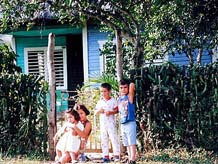
|
Housing seemed to us to be a mixed
success -- certainly not the dismal failure generally reported
in U.S. media. After the revolution, government concentrated
on improving life in rural areas, and that was the right thing
to do because conditions in the countryside had been terrible.
|
|
But cities were let go, and things
have gotten shabby. Some good urban housing has deteriorated
beyond repair. Still, there are no dreadful shanty towns as
in so many poor countries in Latin America and elsewhere. Everyone
has some sort of home, though it may be crowded or even unsafe
by North American standards.
|
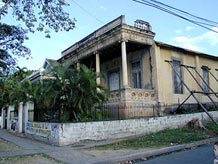
|
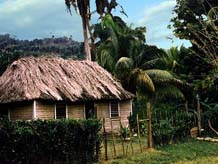
|
Especially in eastern Cuba, substandard
rural housing remains. Some of it even reminded us of housing
that we saw when we lived in Africa. The difference was that
elecricity and some kind of usable water were available just
about everywhere in Cuba. A couple of electric lights, an old
fridge, and a radio or black-and-white TV can make a huge difference
in quality of life for the rural poor.
|
|
Medical care is a more clear-cut
success story. There are clinics like this one virtually everywhere.
Each Cuban family is assigned a doctor, rather like the primary
care physicians in U.S. managed-care schemes. The statistics
are impressive. Cuban life expectancy is about the same as in
the U.S., and infant mortality rates are lower than in some
U.S. cities.
|
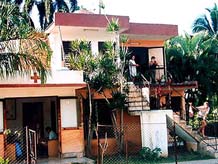
|
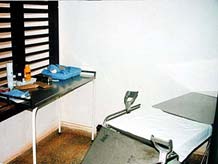
|
The trouble is that between the
U.S. embargo and the collapse of the Cuban economy, clinics
are starved for equipment and supplies. This is the surgery
of the clinic you just saw. The entire supply of drugs is sitting
right on the table.
|
|
The doctor, here with his family,
went to medical school in his 30's after a first career as an
aircraft mechanic. He eventually became licensed in ob-gyn,
internal medicine, and pediatrics. But he earned so little money
that he couldn't afford a car, a scooter -- even a bicycle.
When we met (on our first trip to Cuba in 1999), he was reaching
bedridden patients by walking or hitchhiking.
|
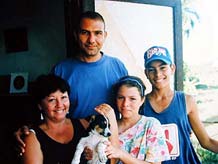
|
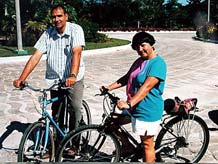
|
Before we left in 1999, we gave
him two bikes. We had brought them to Cuba with the intention
of donating them to someone. They were bikes that a friend in
the U.S. was throwing out. We just tuned them up -- and the
doctor was deeply grateful for them. It's an astonishing thought:
a medical doctor with three specialties being grateful for old
bikes that U.S. schoolteachers were sending to the dump!
|
|
On our second trip, in 2000, we
wanted to do something more significant, so we brought medicine.
This is a clinic outside Santiago de Cuba, named for Mario Muñoz,
a doctor who died in the attack on the Moncada barracks. In
2001, we brought medicine to a similary clinic in Bahia Honda,
Pinar del Rio.
|

|
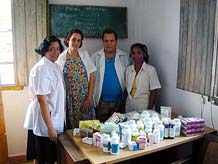
|
Here are a few of the clinic staff
with the medicine we brought, mostly antibiotics. Any visitor
to Cuba can import 22 pounds of medicine duty free, including
prescription drugs, and some doctors or organizations in the
U.S. and Canada will help ordinary citizens obtain prescription
medicine for donation. Non-prescription painkillers and antiseptics,
bandages, and many other supplies are also badly needed.
|
|





